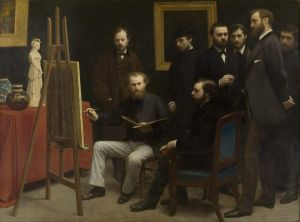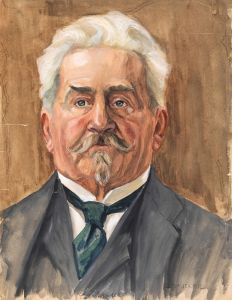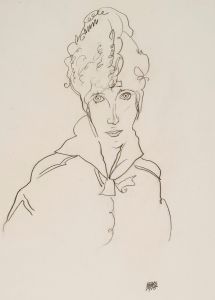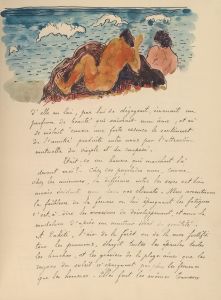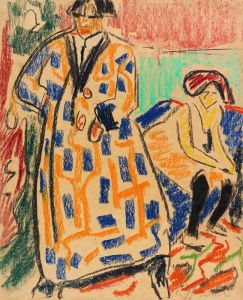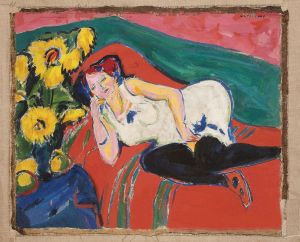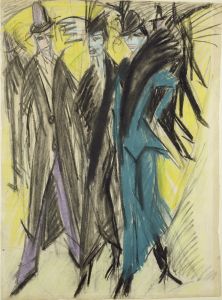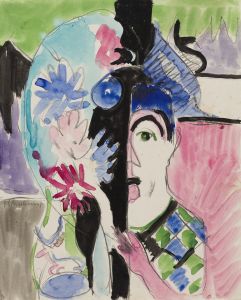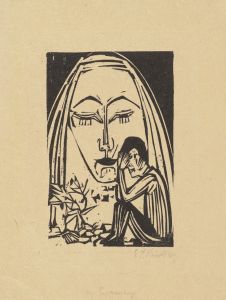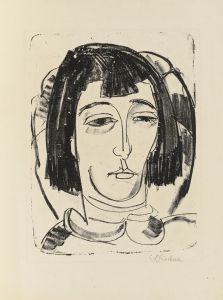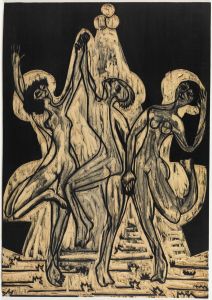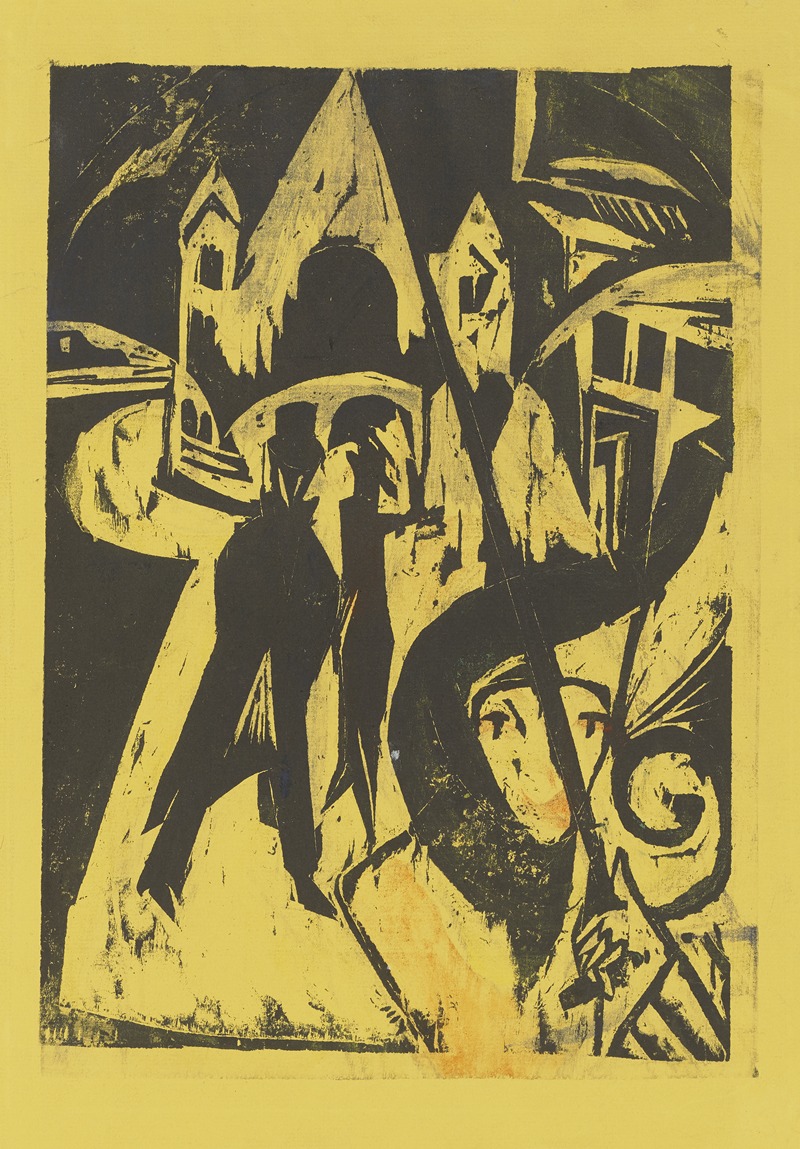
Cocotte on the Street
A hand-painted replica of Ernst Ludwig Kirchner’s masterpiece Cocotte on the Street, meticulously crafted by professional artists to capture the true essence of the original. Each piece is created with museum-quality canvas and rare mineral pigments, carefully painted by experienced artists with delicate brushstrokes and rich, layered colors to perfectly recreate the texture of the original artwork. Unlike machine-printed reproductions, this hand-painted version brings the painting to life, infused with the artist’s emotions and skill in every stroke. Whether for personal collection or home decoration, it instantly elevates the artistic atmosphere of any space.
Ernst Ludwig Kirchner, a prominent German expressionist painter, created "Cocotte on the Street" in 1914. Kirchner was a founding member of the influential artist group Die Brücke (The Bridge), which played a crucial role in the development of Expressionism in the early 20th century. His work is characterized by bold colors, dynamic compositions, and a focus on the human figure, often exploring themes of modernity and urban life.
"Cocotte on the Street" is a striking example of Kirchner's exploration of urban themes and the human condition. The term "cocotte" refers to a fashionable prostitute or courtesan, a subject that Kirchner frequently depicted in his work. This painting reflects the vibrant yet tumultuous atmosphere of Berlin during the early 1900s, a time when the city was rapidly modernizing and becoming a cultural hub.
The painting captures a scene on a bustling street, with the central figure of the cocotte standing out amidst the crowd. Kirchner's use of vivid colors and bold, angular lines creates a sense of movement and energy, characteristic of his expressionist style. The cocotte is depicted with exaggerated features and a striking pose, drawing the viewer's attention and evoking a sense of intrigue and complexity. This portrayal reflects Kirchner's interest in the psychological depth of his subjects, as well as the social dynamics of urban life.
Kirchner's work during this period often focused on the alienation and anonymity experienced in modern cities. "Cocotte on the Street" exemplifies this theme, as the cocotte appears both part of the crowd and isolated from it, highlighting the duality of visibility and invisibility in urban environments. The painting's composition, with its skewed perspectives and fragmented forms, further emphasizes the disorienting nature of city life.
The historical context of "Cocotte on the Street" is significant, as it was created just before the outbreak of World War I. This period was marked by significant social and political changes in Germany, which influenced Kirchner's work. The painting reflects the tensions and uncertainties of the time, as well as the artist's own struggles with mental health and his experiences in the rapidly changing world around him.
Kirchner's contribution to the expressionist movement and his depiction of modern life have left a lasting impact on the art world. "Cocotte on the Street" is a testament to his ability to capture the complexities of human experience and the vibrancy of urban existence. Today, Kirchner's works are celebrated for their emotional intensity and innovative approach to form and color, securing his place as a key figure in the history of modern art.
The painting is housed in various collections and continues to be studied and appreciated for its artistic and historical significance. Kirchner's exploration of themes such as identity, modernity, and the human condition remains relevant, offering insight into the challenges and experiences of life in the early 20th century.





